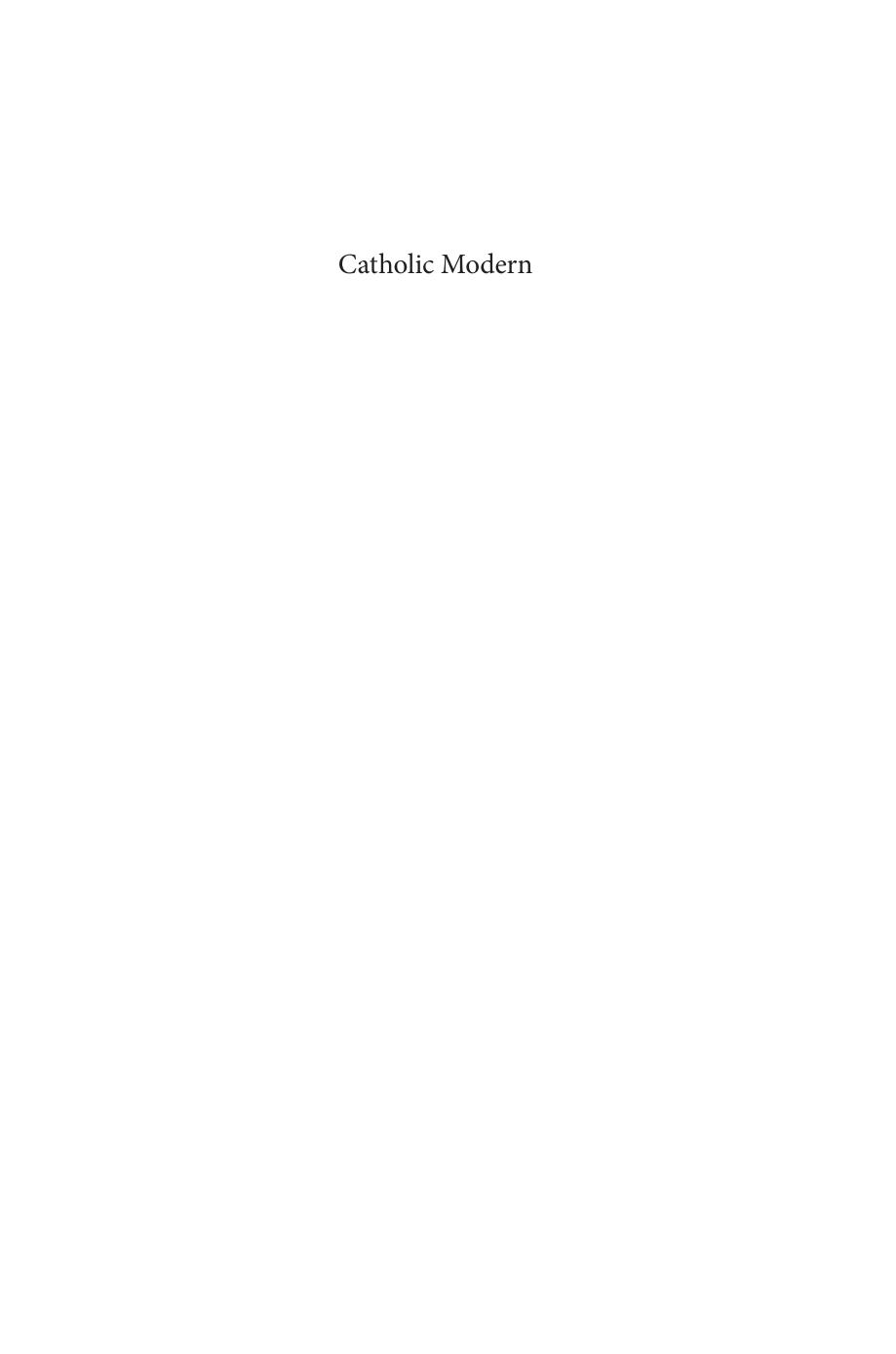Catholic Modern: The Challenge of Totalitarianism and the Remaking of the Church by James Chappel

Author:James Chappel
Language: eng
Format: epub, pdf
Tags: History, Europe, Western, Modern, 20th Century, Religion, Christianity, Catholic, Religion; Politics & State
Publisher: Harvard University Press
Published: 2018-02-19T00:00:00+00:00
The Fate of Fraternal Modernism in the Early Cold War
The interesting question is not why Maritain’s brand of antifascism failed to inspire Christian Democratic parties. It would have been shocking if it had, given Maritain’s own disinterest in parliamentary politics, the marginality of his own tradition in the 1930s, the cautious conservatism of the Vatican, and the general collapse of the antifascist unities of the wartime resistance. The interesting question is why Maritain, or someone like him, did not emerge at the forefront of a transnational network of Catholic dissidence the way he had in the 1930s. For decades, Catholic intellectual culture had been raucous, as various camps debated fiercely over what the faith meant and how it might translate into political or social action. After World War II, these debates died down considerably. While there were still dissenters, notably in France and Poland, it is nonetheless the case that, for the first time since the French Revolution, there was widespread agreement on the basic parameters of Catholic activity in the world.
The narrowing of Catholic intellectual and political horizons had multiple causes. One was geopolitical: in the 1930s, antifascist Catholics had recourse to a plausible set of allies, arrayed against an enemy (fascism) that was worrisome to many Catholics, including Vatican leaders. This space closed in the late 1940s, as the generative “antifascist versus anti-Communist” binary gave way to the more restrictive “Communist versus anti-Communist” one. Just as importantly, however, the newly hegemonic forms of anti-Communist Catholicism were more pliable than they had been in the 1930s. Christian Democratic parties were “catch-all” movements with oppositional wings, and quite a wide range of Catholic activists were at home in them. The parties were spaces of ideological synthesis between Catholics and Protestants but also between different kinds of Catholics. Many Catholic intellectuals in the fraternal tradition found themselves on the left wing of the new parties, which provided the institutional capacity for dialogue and consensus that had been lacking in the interwar years.
Fraternal modernists, in other words, were not homeless: the intellectual and political culture of the early Cold War was remarkably capacious and inclusive, even if it did not play host to a robust anticapitalism or antistatism. Outside party politics, too, fraternal modernists like Maritain were able to find a home in a vibrant transatlantic intellectual culture. While the antifascist excitement of the 1930s did not return, there was certainly more on offer than McCarthyite paranoia. Maritain rightly saw that the intellectual landscape of the Cold War Atlantic world was more experimental and welcoming than detractors, then and since, have admitted. When fraternal Catholics like Maritain considered America and its hegemony, they did not see only imperial overreach and capitalist consolidation. Maritain was a great believer in America, but like Alexis de Tocqueville he found the America that he wanted to find. Maritain was uninterested, for instance, in the grand state building projects of the Democratic Party. He looked instead to the smaller and more grassroots projects of people such as
Download
Catholic Modern: The Challenge of Totalitarianism and the Remaking of the Church by James Chappel.pdf
This site does not store any files on its server. We only index and link to content provided by other sites. Please contact the content providers to delete copyright contents if any and email us, we'll remove relevant links or contents immediately.
Resisting Happiness by Matthew Kelly(3303)
The Social Psychology of Inequality by Unknown(2941)
Day by Elie Wiesel(2721)
Designing Your Life by Bill Burnett(2667)
The Giving Tree by Shel Silverstein(2289)
Human Design by Chetan Parkyn(2030)
Angels of God: The Bible, the Church and the Heavenly Hosts by Mike Aquilina(1932)
The Supreme Gift by Paulo Coelho(1901)
Jesus of Nazareth by Joseph Ratzinger(1769)
Hostage to the Devil by Malachi Martin(1757)
Augustine: Conversions to Confessions by Robin Lane Fox(1736)
7 Secrets of Divine Mercy by Vinny Flynn(1690)
Dark Mysteries of the Vatican by H. Paul Jeffers(1676)
The Vatican Pimpernel by Brian Fleming(1668)
St. Thomas Aquinas by G. K. Chesterton(1606)
Saints & Angels by Doreen Virtue(1579)
The Ratline by Philippe Sands(1515)
My Daily Catholic Bible, NABRE by Thigpen Edited by Dr. Paul(1464)
Called to Life by Jacques Philippe(1456)
